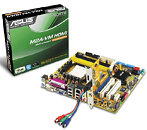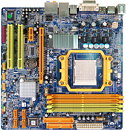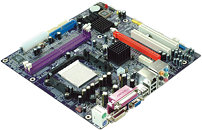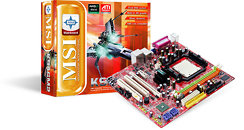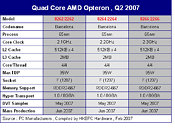AMD Launches New 690G and 690V Chipsets tomorrow
AMD will finally launch its long-awaited 690-series chipset-family tomorrow. Two variants will spearhead the release: the RS690-based mainstream AMD 690G with ATI Radeon X1250 graphics, and the RS690C-based value AMD 690V with ATI Radeon X1200 graphics.
AMD's 690-family hit plenty of snags along its development cycle. Early roadmaps showed a 2H'2006 launch, however, AMD kept pushing the launch back. Motherboard vendors blamed the delayed launch on AMD for multiple delays with the RS690. AMD's discrete RX690 variant that was to launch in the same timeframe as RS690 has yet to make an appearance. The ATI Radeon X1200-family IGP features two pixel-pipelines and two vertex-shaders. Unlike some ATI Radeon X1000-series GPUs, the pixel-pipelines have not been decoupled - the ATI Radeon X1200-family only has two pixel-shaders. AMD specifies a 400 MHz GPU-core clock for reference designs.
The ATI Radeon X1200 powered AMD 690V only supports D-Sub VGA and TV-output capabilities. AMD ups the ante with the AMD 690G with ATI Radeon X1250 graphics by integrating native DVI and HDMI output capabilities with support for HDCP, despite previous delays.
AMD's 690G will drive simultaneous DVI and HDMI devices too. It is up to the manufacturer to support the output capabilities of the AMD 690G, though some manufacturers have opted to provide HDMI outputs via an ADD2-style add-in card.
Below are some pictures of motherboards from Asus, Biostar, ECS, and MSI.




